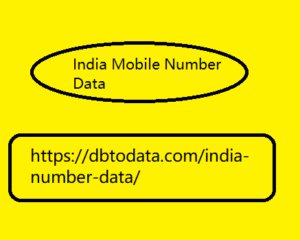Post by account_disabled on Mar 10, 2024 14:27:57 GMT 5.5
In recent years we have witnessed a slow but progressive evolution of those online spaces used for communicating and socializing. 14 years ago, when I made my first social network map, these services were mainly used on desktop. Then, smartphones radically transformed our habits and even the places we meet, creating the space for the mass adoption of instant messaging apps. This year I propose two maps to read in a complementary way: one dedicated to the use of social networks and another which also includes instant messengers. The social world divided into 3 blocks The new map of the most popular social networks by country presents a consolidation of the positions acquired by the major players in recent years.
The world is divided into three large blocks: the East, the territories of the former Soviet Union and the rest India Mobile Number Data of the world. The vast majority of the globe has been conquered by Facebook which is the favorite social network in 156 of the 167 countries analyzed (93%). In the last twelve months it reached 2.9 billion monthly users , of which 1.9 billion were connected at least once a day. The Meta group also covers Iran and Japan with Instagram. The territories of the former Soviet Union are devoted to VK (formerly known as V Kontakte) , a social photocopy of Facebook launched by the founder of Telegram and then passed under the control of pro-government companies (most of the voting rights go to MFT , a group formed by SAGOZ, Gazprom-Media Holding, Rostec).

It claims 400 million registered users, but the active ones are just over 100 million. In China the favorite social network is WeChat (Weixin) which has over 1.26 billion active users per month. It is not just a social network, but a super app, developed by the giant Tencent, which combines messaging functions and the possibility of using mini-apps developed by third parties with the most disparate purposes (leisure and utility, even services government). Consider that in 2021, more than 700 million users used mini-apps dedicated to booking swabs and vaccines for Covid-19. A closed world heavily controlled by the government which represents a model, perhaps unattainable, for Western instant messengers. The most popular Instant Messengers in the world If in this context of a world divided into three blocks we try to introduce the variable represented by messaging applications, the scenario changes and Facebook loses its centrality.
The world is divided into three large blocks: the East, the territories of the former Soviet Union and the rest India Mobile Number Data of the world. The vast majority of the globe has been conquered by Facebook which is the favorite social network in 156 of the 167 countries analyzed (93%). In the last twelve months it reached 2.9 billion monthly users , of which 1.9 billion were connected at least once a day. The Meta group also covers Iran and Japan with Instagram. The territories of the former Soviet Union are devoted to VK (formerly known as V Kontakte) , a social photocopy of Facebook launched by the founder of Telegram and then passed under the control of pro-government companies (most of the voting rights go to MFT , a group formed by SAGOZ, Gazprom-Media Holding, Rostec).

It claims 400 million registered users, but the active ones are just over 100 million. In China the favorite social network is WeChat (Weixin) which has over 1.26 billion active users per month. It is not just a social network, but a super app, developed by the giant Tencent, which combines messaging functions and the possibility of using mini-apps developed by third parties with the most disparate purposes (leisure and utility, even services government). Consider that in 2021, more than 700 million users used mini-apps dedicated to booking swabs and vaccines for Covid-19. A closed world heavily controlled by the government which represents a model, perhaps unattainable, for Western instant messengers. The most popular Instant Messengers in the world If in this context of a world divided into three blocks we try to introduce the variable represented by messaging applications, the scenario changes and Facebook loses its centrality.
